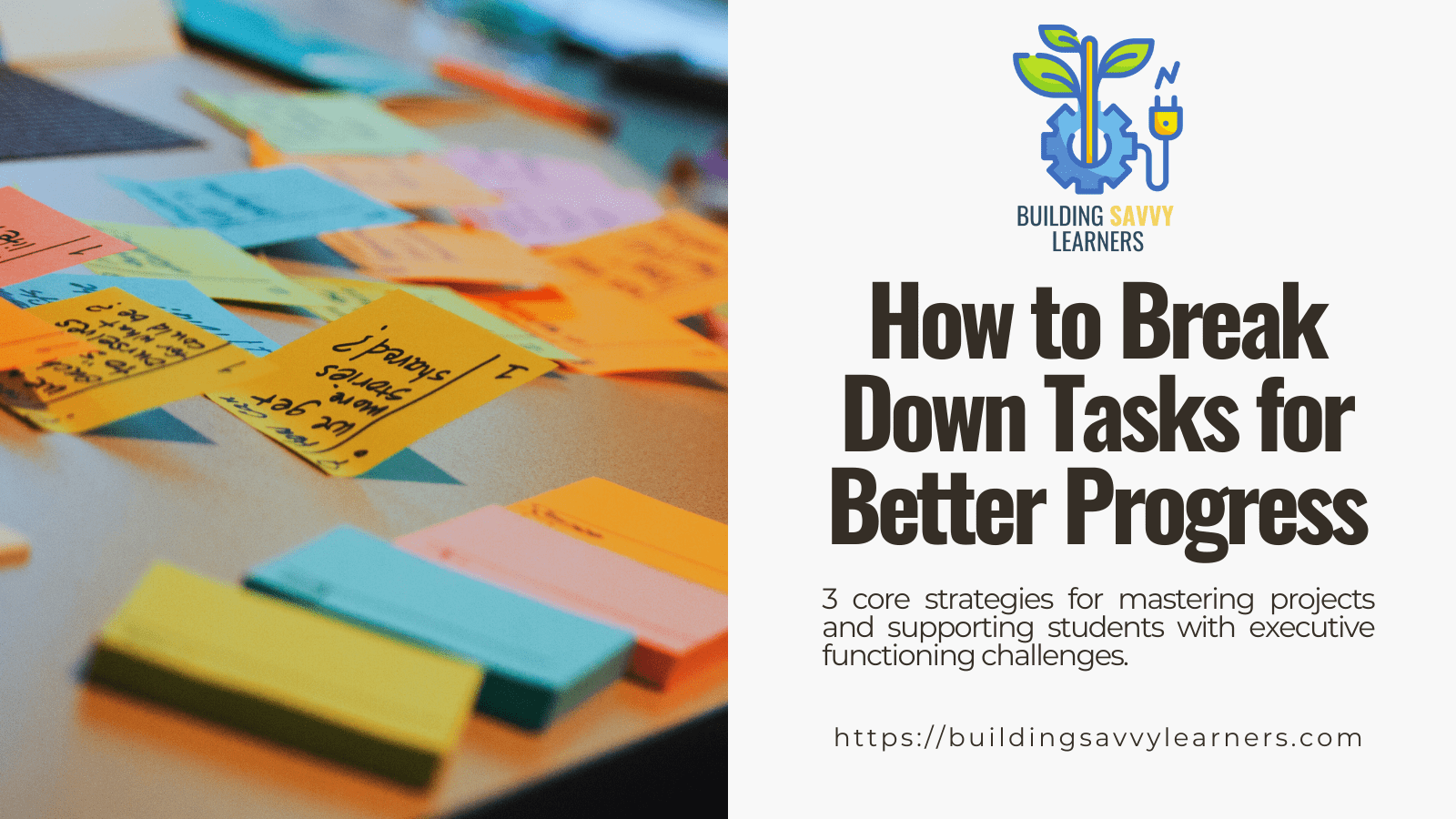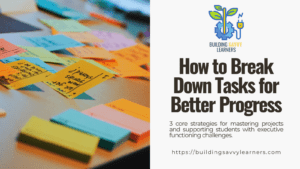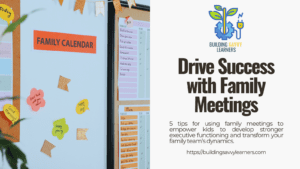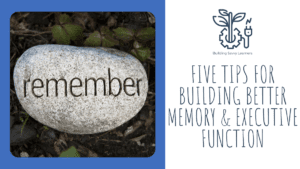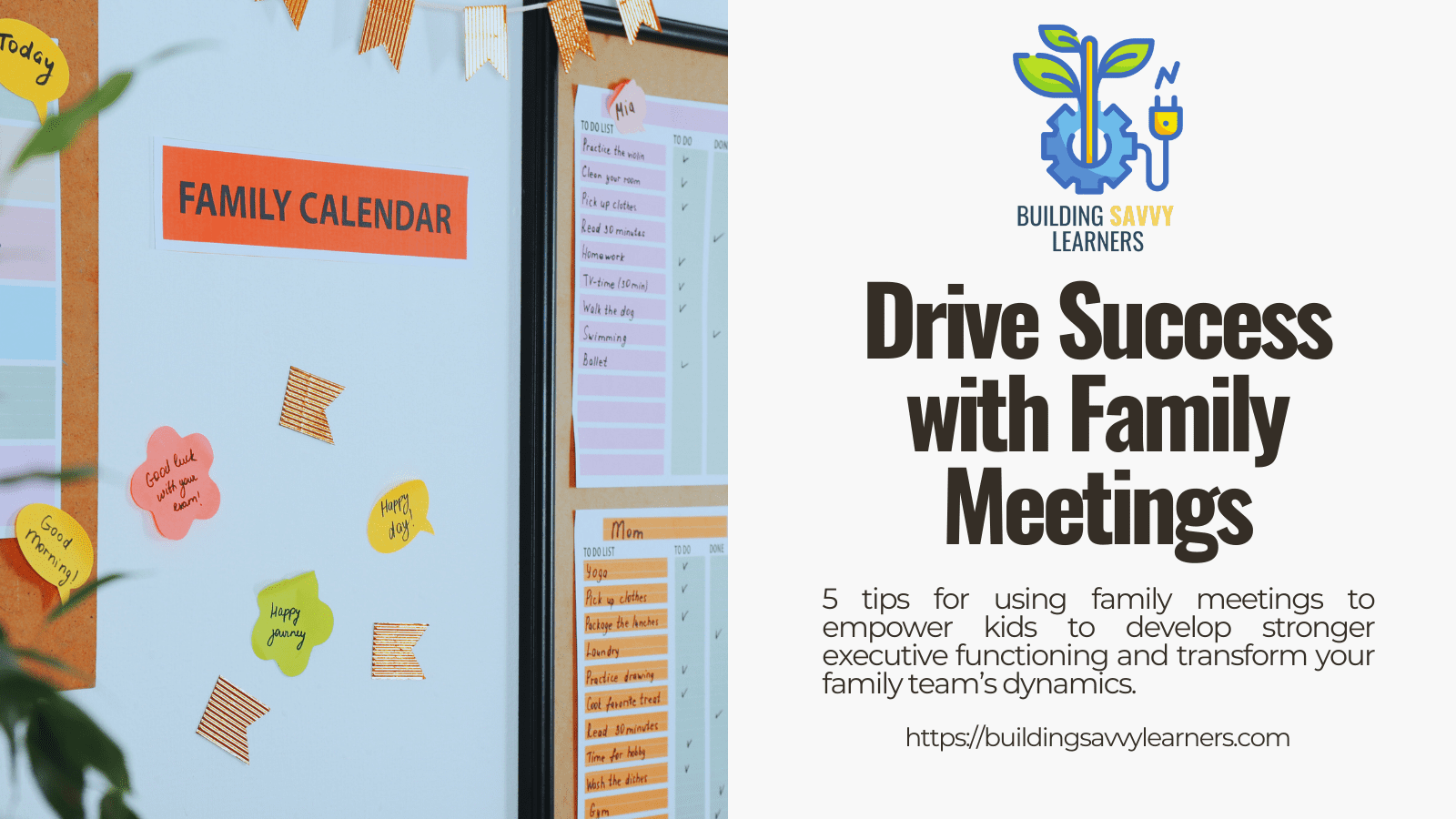Summary
This blog post offers strategies for helping children with weaker executive function skills break tasks into smaller, more manageable steps. It covers three key methods:
Breaking tasks down by time (e.g., setting a timer for short work intervals).
Breaking tasks down by space (e.g., organizing the task by specific areas or steps).
Breaking tasks down by task type (e.g., grouping similar activities together).
The post also emphasizes the importance of flexibility, reflection, and adjusting strategies to fit each child’s needs. By breaking tasks into smaller parts, children can feel less overwhelmed, stay focused, and build confidence as they work toward completing their goals.
Parents and teachers are encouraged to experiment with these strategies, reflect on progress, and adjust as needed to support their child’s success.
Executive function (EF) is an umbrella term to describe the mental skills needed to plan, focus, remember instructions, and manage multiple tasks. These cognitive processes help us accomplish our goals. Organizing, prioritizing, and executing tasks effectively can be challenging for children, especially those with weaker EF skills. As a result, these students may struggle with breaking down and completing projects, whether the project is cleaning their room or writing an essay.
Projects are made up of several smaller tasks that build together to make a final result. Weak executive function often means that a person has a hard time visualizing all of the component steps along the way, and as a result, they may not know what’s involved or where to start. One way to address this is by breaking a project down into smaller parts. This can be done by time, space, or task type.
Breaking down tasks by time
People with EF challenges sometimes struggle to estimate how long tasks will take. They may see a project and think it will take forever to accomplish. In those situations, it can help to set a time limit for how long the student will be expected to work on the task. The goal isn’t necessarily to finish the task in that time. Instead, we’re looking to make headway on it.
To start, choose a short time (e.g., 5-10 minutes) and set a timer. The student should commit to working for that time, and then they may stop when the timer goes off. Each day, you can increase the time they’re expected to stay on task by 1-2 minute increments, capping out around 25 minutes. A visual timer like the Time Timer can be helpful for this for younger students. Older students may prefer to use a focus app like Forest to track their progress.
This strategy counteracts the feelings of “this will take forever” by creating a finite limit on the daily time commitment. If the student wants to keep going with the task – which sometimes happens once they break through the challenge of getting started – they’re given that option. But if not, then at least they are 5-10 minutes closer to being done.
Breaking down tasks by spaces
Tackling a project can feel like scaling a mountain and become overwhelming. Rather than looking at the entire mountain, looking at the next couple of steps can be more productive. That’s where breaking down tasks by spaces helps. The job isn’t to clean the whole room; it’s to organize the bookshelf. We’re not writing the whole research paper; we’re writing the first body paragraph.
To get started, a parent, teacher, or coach should help the student break the project into zones. If we’re dealing with a physical space, look for manageable spaces like “the corner by the window” or “under the bed.” If it’s an abstract space like a blank Google Doc waiting for an essay to be written, create a graphic organizer or other template to help break the final product into components. You could even use sticky notes for the different steps.
This strategy makes the task feel less daunting because there’s a clearer endpoint without having to do everything all at once. It may take a few days to complete the project, but it will feel more manageable to the student.
Breaking down tasks by task types
Unlike the previous strategies, this approach organizes the work by its component actions. Similar activities are grouped together so that the student doesn’t have to switch between tasks or make a ton of decisions along the way. They can focus on one thing rather than bounce between several different tasks. For example, they might gather all the laundry while working on cleaning their room or check all of their citations for proper formatting in their research paper. Providing a narrow focus for the type of task that needs to be done gives clearer direction on what it means to be done with that task.
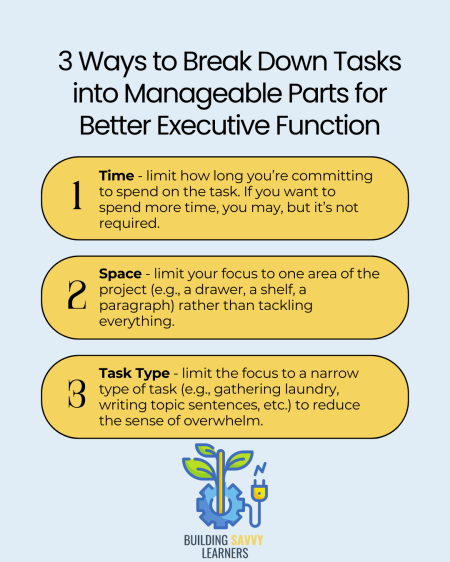
Comparing task breakdown strategies
Here are some common tasks students are expected to do at home or school, showing how each strategy compares.
Task breakdown: Cleaning your bedroom
- Breaking it down by time means setting a timer for 10-15 minutes and spending that time cleaning up. The task may not get done in that time, but it’s a reasonable amount of time to accomplish some progress.
- Breaking it down by space creates a list of areas in the room to focus on (e.g, making the bed, straightening a bookshelf, cleaning out a drawer, etc.) and choosing one to work on until completion.
- Breaking it down by task type means lumping similar items together. For example, pick up all of the clothes off the floor. Find all of the dirty dishes and take them to the kitchen. Gather all of the books and put them on the shelf. Return all of the Lego bricks to the bin.
Task breakdown: Writing an essay
- Breaking it down by time means setting a timer for a specified amount of time, and trying to get as many words on the page as possible before the timer goes off. If you keep track of the word count from session to session, you can gamify this by trying to get the child to beat their previous score.
- Breaking it down by space means setting word, sentence, paragraph, or page targets. For example, write one paragraph if it’s a five-paragraph essay. If it’s a ten-page research paper, maybe you’re writing one of those pages.
- Breaking it down by task entails looking at the various components of the essay and picking one to focus on: researching, outlining, drafting topic sentences or supporting details, revising for clarity, etc.
Trying this out at home or school
Not every child will respond to the same strategies in the same way. In fact, you may find that a strategy that works in some situations won’t work in others. Or maybe it will work for a while and then stop working. It’s important to stay flexible and be willing to adjust the methods to fit each child’s needs. The goal is to experiment with different approaches to find one that helps your child focus and feel accomplished. Adapt and refine these strategies until you find what works best for your child.
It’s also helpful to take some time to reflect with your child. Often, they may be ready to forget the work even happened and move on to the next thing. But reflection encourages students to evaluate their own work and celebrate small successes. If they feel good about completing a task – even in small chunks – they’ll be more likely to keep trying in the future. To do this, ask questions like:
- What part of this task was easiest for you?
- Which strategy helped you stay focused?
- What could we change next time to make it even easier?
Incorporating strategies to break tasks into smaller, more manageable steps can make a world of difference for children with weaker executive function skills. It reduces overwhelm, provides clarity, and boosts confidence—key elements for success. By breaking tasks down by time, space, or task type, children can visualize and tackle even the most complex projects.
If you’ve found these tips helpful or tried these strategies and noticed improvements, I’d love to hear about your experiences. Feel free to share your feedback or any additional tips you’ve discovered in the comments below! Let’s keep the conversation going and continue helping our kids develop the executive function skills they need for success.

